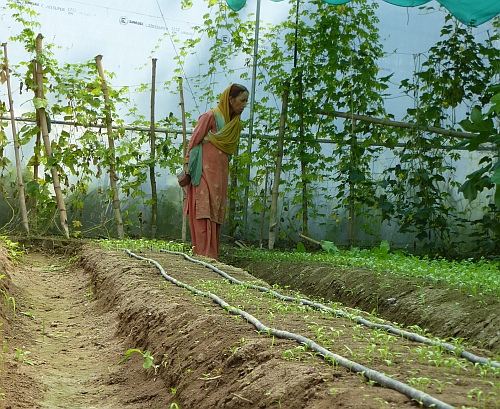The Chinmaya Organization for Rural Development (CORD) has been working in rural India since 1985. Since then , it has had an impact in 600 villages in 4 states of India. This presentation describes its recommended strategy for achieving inclusive growth in rural India. Sushma Devi, a farmer working with CORD, has invested in improved agricultural methods (Photo: Chicu Lokgariwar)
Sushma Devi, a farmer working with CORD, has invested in improved agricultural methods (Photo: Chicu Lokgariwar)
The presentation begins with a broad overlook at rural India and the problems it faces. These include:
- Water scarcity
- Connectivity
- Electricity
- Health faciliies and nutrition
- Sanitation and hygiene
- Education
- Exploitation of the vulnerable
- Apathy, ignorance and substance abuse
A brief history of CORD's evolution from 1985 to the present day is given.
The section on 'Understanding macro-realities' then illustrates the issues with the current development models. These models include several parallel programmes that deal with any one issue and are administered at the centre. This means a certain duplication of efforts and resources, and more importantly, a trickle-down effect with only a fraction of the outlay reaching the targeted beneficiaries.
On the other hand, a bottom up approach focuses on building up the capacities of the community and of the local field workers through iterative processes. This facilitates sustainable development through community based organizations. Along the same principles, the programmes are designed to be inclusive and address overall growth instead of merely one aspect of it. It is acknowledged that the real challenge of capacity building is ensureing active participation.
CORD's vision is 'to harness human resources and enable the poor to transform their lives through programmes driven by themselves.' The presentation goes on to describe CORD's outreach and impact in the areas in which it has a presence.The various programmes and activities are also listed.
Download the entire presentation below:
/articles/enabling-empowerment-cord-approach-towards-rural-development-himachal-pradesh